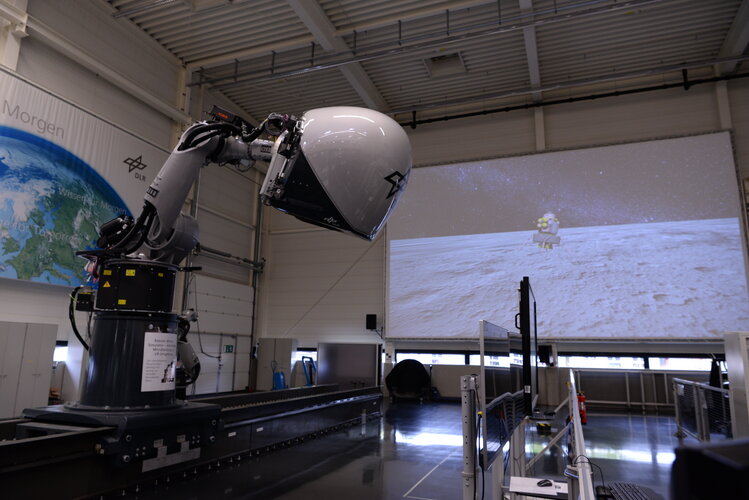
The DLR Robotic Motion Simulator is based on an industrial robot arm with a flight deck capsule attached to it, fitted in turn with a virtual flight deck window
From the capsule, Roberto was able to experience how a spacecraft behaves during critical flight phases then take action to control it. In one test scenario, the auto pilot was set to land in a landing zone littered with boulders. Vittori was able to intervene within a given time window and select a safer alternative landing site via touch screens.
In another scenario, the autopilot experienced a technical fault. Here, the Italian astronaut was able to switch to fully manual control and pilot the module manually as it descended onto the lunar surface.
“Our primary goal has been to evaluate human-machine interfaces and assistance functions for spacecraft,” explains ESA project manager Luca Ferracina.



